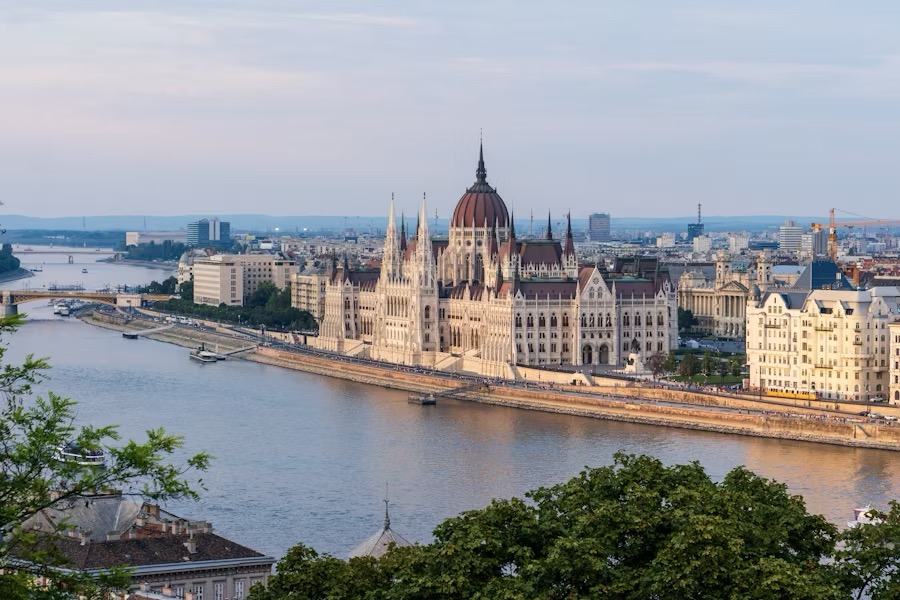We’ve been to Budapest before—and we were truly looking forward to going back. It’s one of those cities that stays with you. Not in an overly grand way, but in the kind of way that lingers, long after you’ve left.
This time, we were just passing through—Budapest was the starting point for our river cruise (Budapest to Bucharest), but we made sure to arrive early and squeeze in as much as we could. We had a short list of favorites we wanted to revisit, and we added a few new ones too. And even with limited time, it reminded us why we love this city so much.
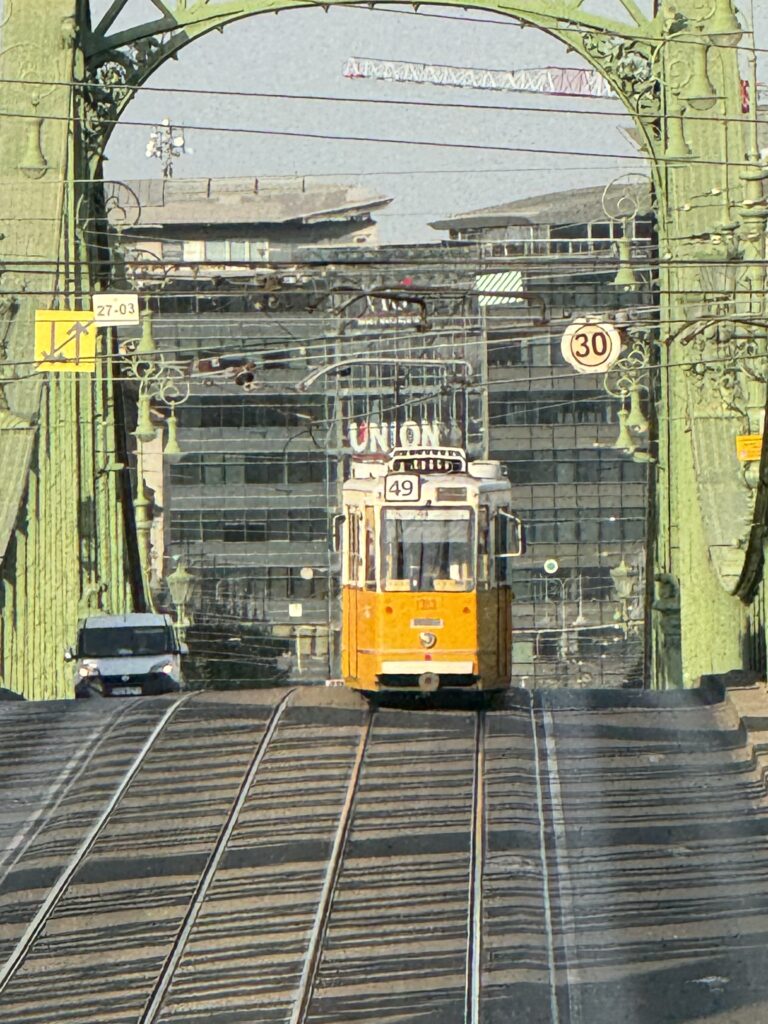
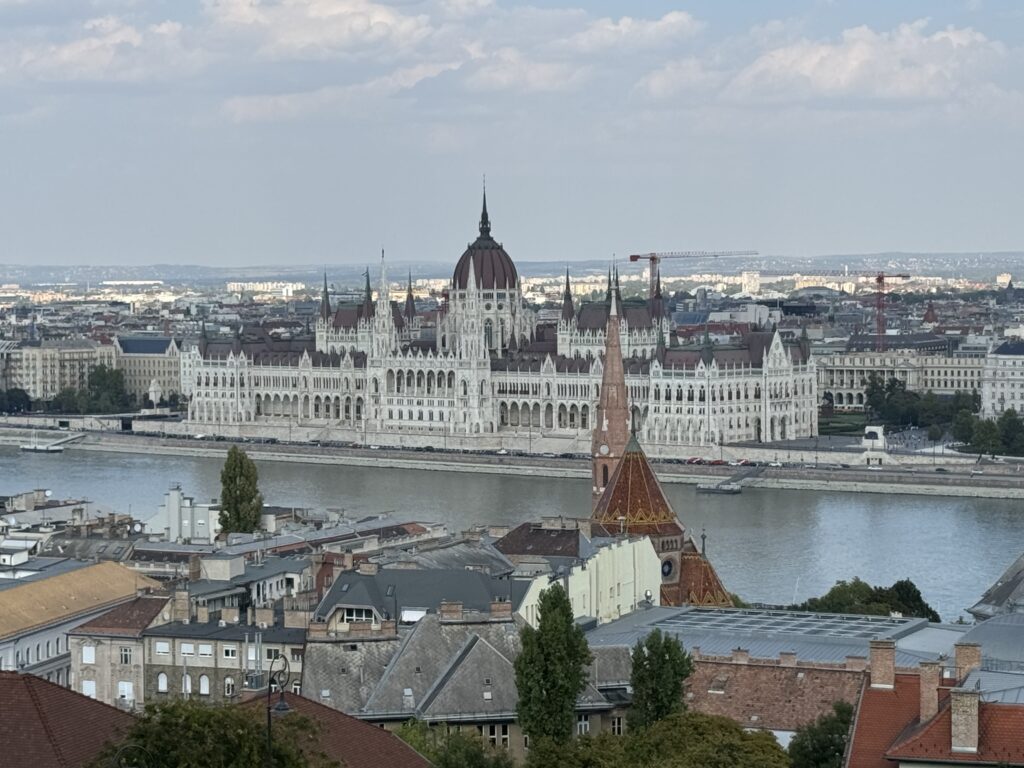
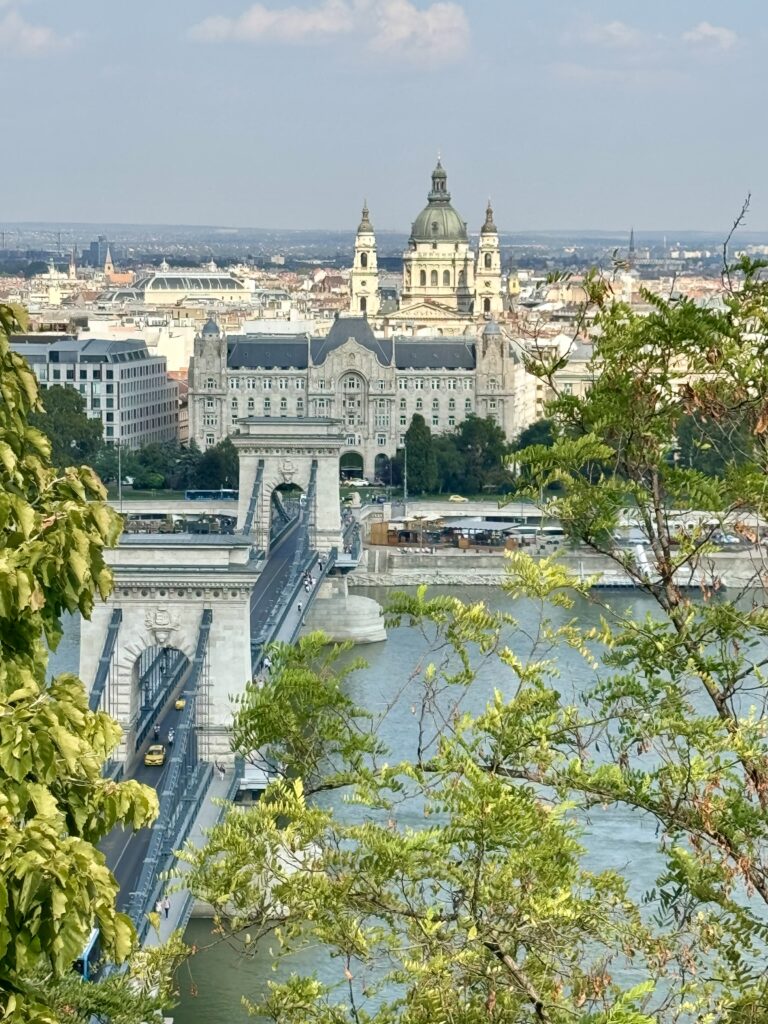
The Other Side of the River: Pest’s Culture and Charm
Budapest is really two cities in one, and both Buda and Pest have its own bold personality. On the Pest side, we were especially moved by the Shoes on the Danube, a quiet but powerful memorial to the Jews who were killed during World War II. Rows of iron shoes line the water’s edge—a stark, simple tribute that speaks volumes. It’s one of those places that you remember forever.
Not far from there is the Hungarian Parliament Building, arguably one of the most beautiful in the world. Ornate, symmetrical, and sitting proudly on the riverbank—it’s a stunner, day or night. We didn’t do a tour this time, but just seeing it from the outside is enough to make an impression. However, visiting the inside is worth the trip, but make sure to make reservations online well ahead of your time in Budapest.

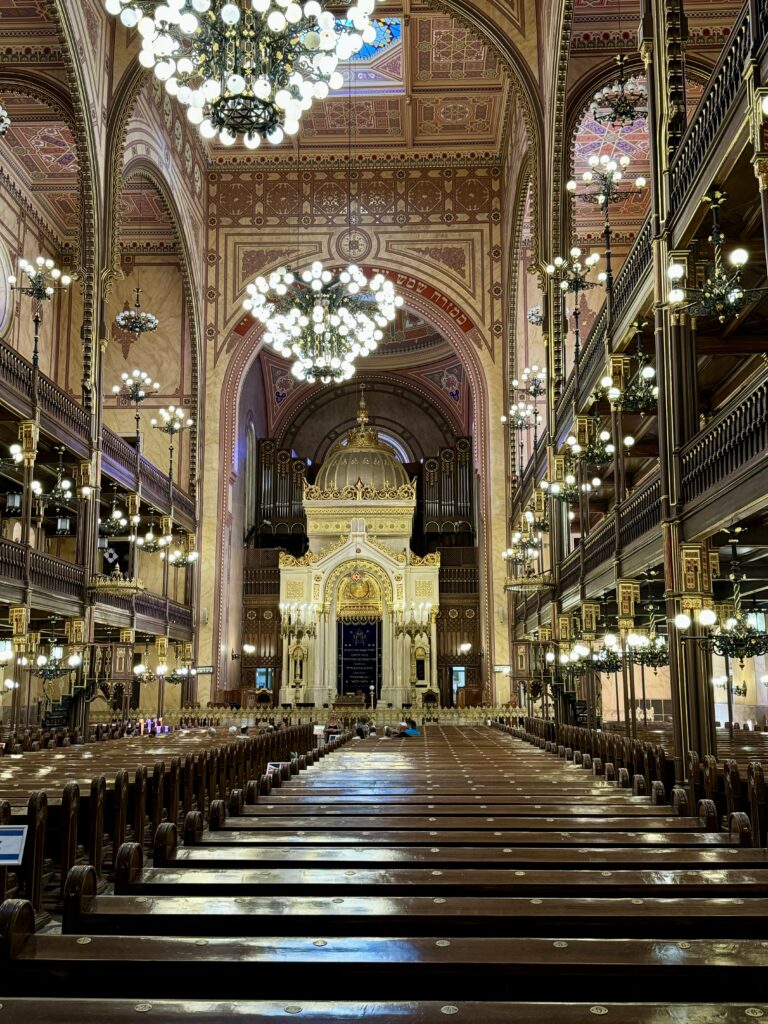
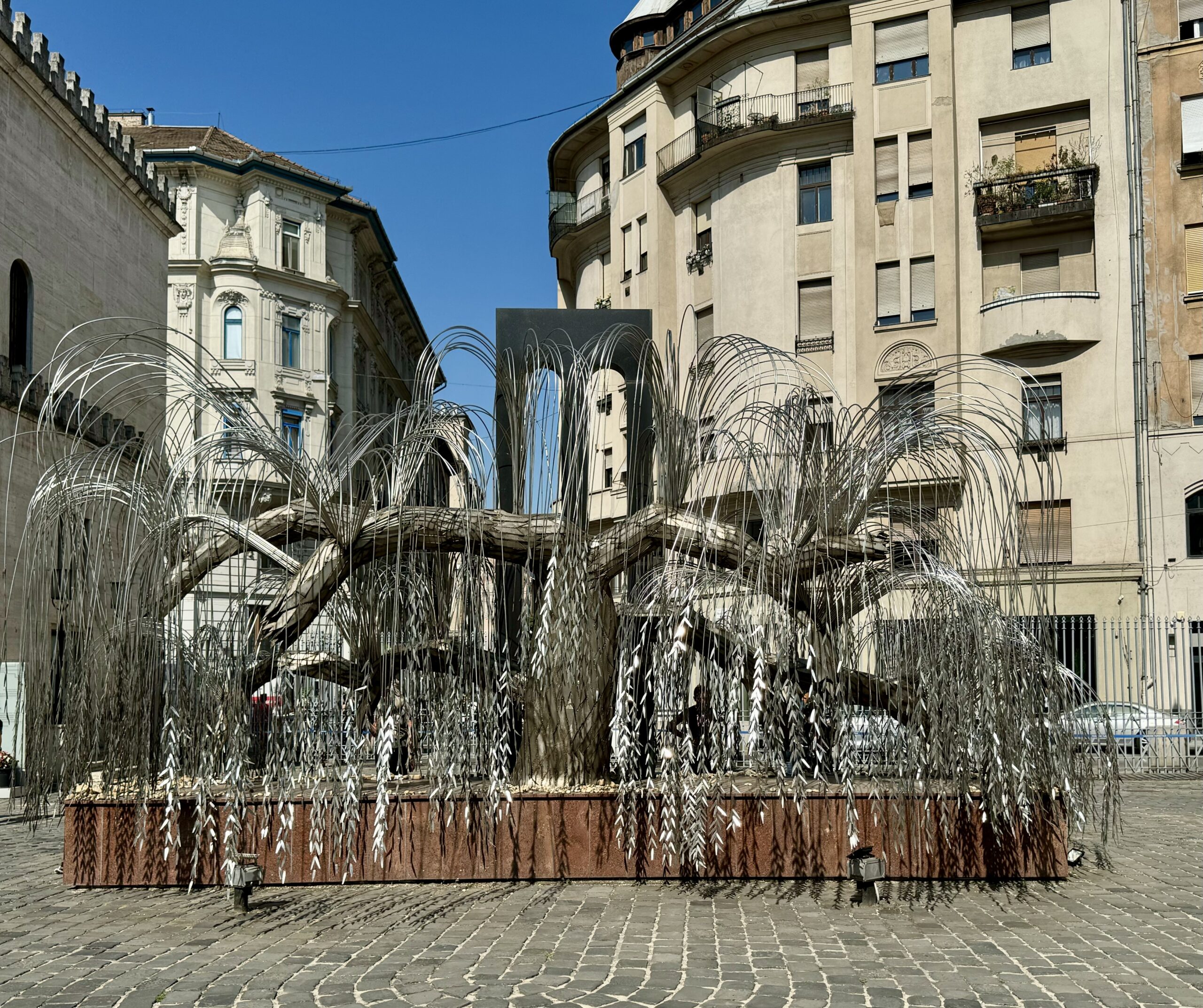
We also visited the Dohány Street Synagogue, the largest in Europe and a deeply moving place to spend a morning. We joined a guided tour that brought the layers of history into sharp focus—from the grandeur of the Moorish Revival architecture to the quiet ache that still lingers in the courtyard. The stories of the Holocaust memorial, the cemetery, and the Tree of Life all struck different chords. It’s a place of reverence and resilience, not just for the Jewish community, but for the city as a whole. Even today, the weight of its history can still be felt in the quiet ways Budapest remembers. We left touched—more aware of the strength it takes for a city to carry so much and still move forward with grace.
Baths, Bastions & the Beauty of Buda
We’ve done the famous (and larger) Széchenyi Baths before—the outdoor pools surrounded by cheerful yellow buildings and locals playing chess while waist-deep in steamy water. And we loved our time there. But this trip, we visited the Gellért Thermal Baths, tucked into the elegant Gellért Hotel near Liberty Bridge. It’s where Art Nouveau meets healing waters. The mosaics and stained glass alone are worth the visit, but slipping into those warm pools felt like a kind of exhale after traveling. Both baths can be a bit confusing at first, but if you relax and take your time exploring, you’ll find your way around.

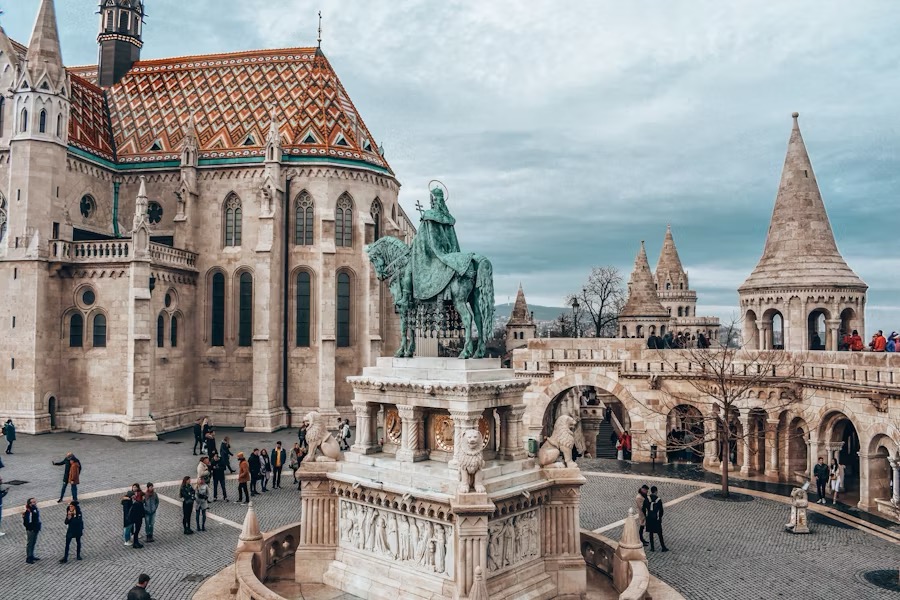
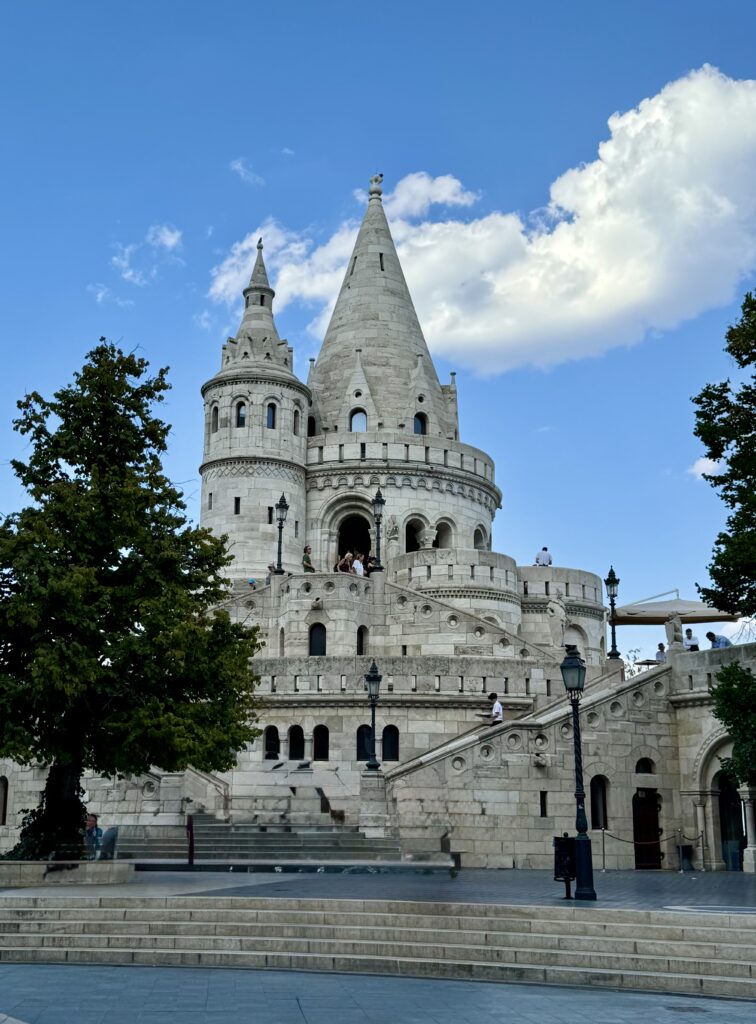

On the Buda side, we made our way to Fisherman’s Bastion, one of the most photogenic spots in all of Europe. It overlooks the river with quiet charm. The whole area has a timeless feel – unassuming but full of character. We took the funicular up Castle Hill—it’s a short ride, but a fun one, and definitely the easiest way to get there without the uphill climb. It gives you a different perspective of the city as you go up. Once you’re at the top, the neighborhood is full of winding streets, quiet corners, and views that invite you to linger. It’s a place best explored slowly—with your camera ready and time to take it all in.
One stop that holds a special place in my heart is 21 Magyar Vendéglö – Hungarian Kitchen, a cozy, family-run spot serving delicious Hungarian fare. We popped in to say hello on this visit, but years ago, I had the pleasure of writing a paid article about this gem. The food is bursting with flavor, the service is warm and welcoming, and the atmosphere is as charming as ever. If you’re looking for a memorable meal in a setting that feels like home, this is the place.
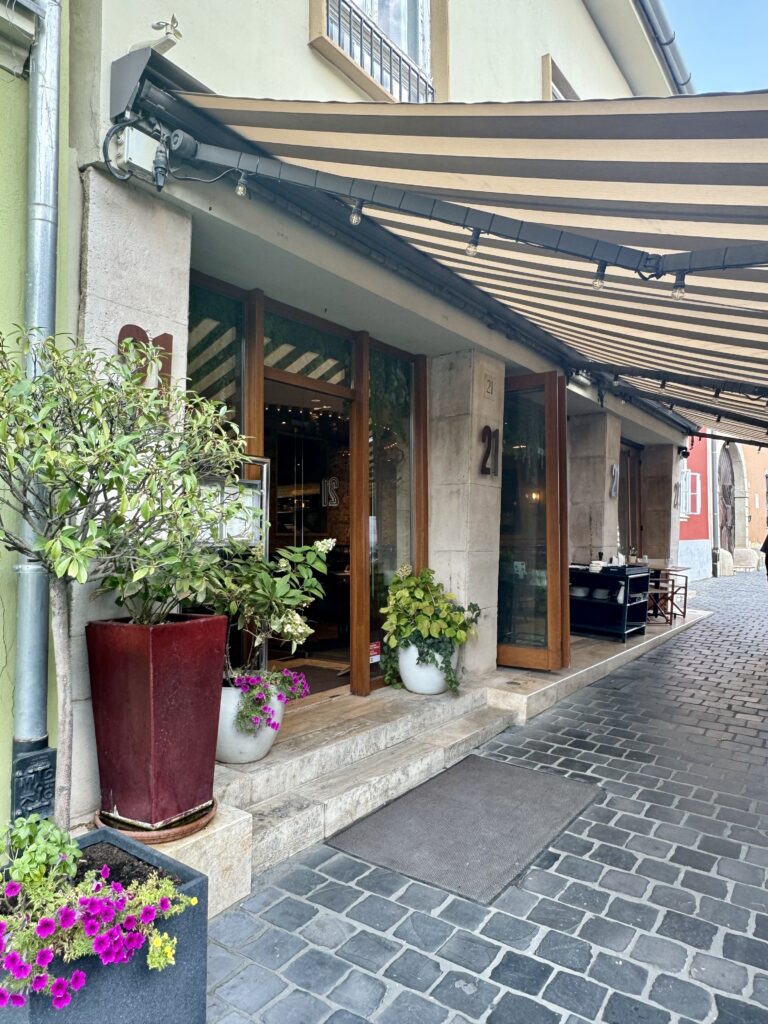
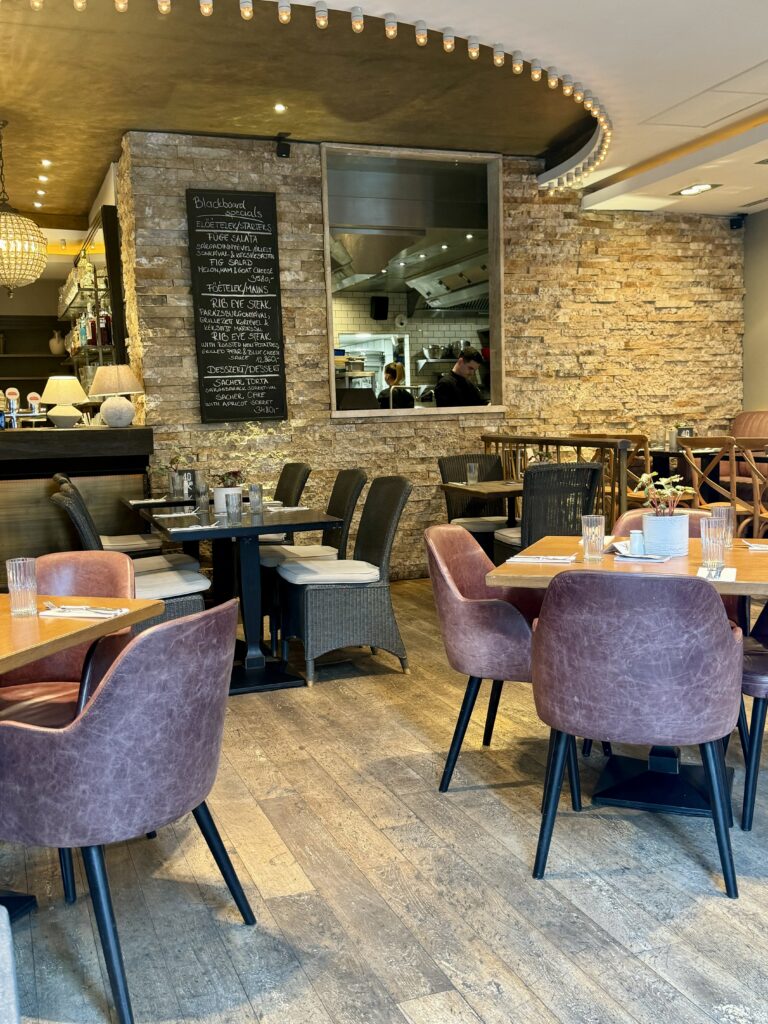
Markets, Meals, and Memorable Moments
No visit to Budapest feels complete without a stop at the Great Market Hall. It’s a feast for the senses—rows of paprika, stacks of embroidered linens, counters of strudel and salami. It’s bustling and colorful, and we always find something we didn’t know we needed.
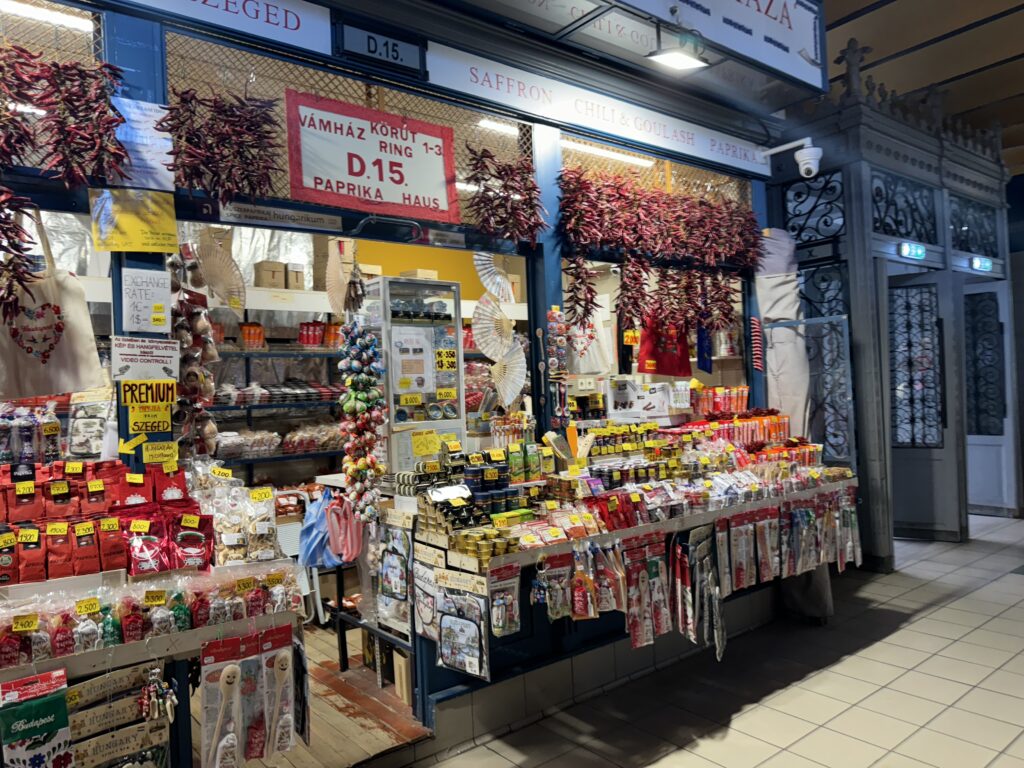
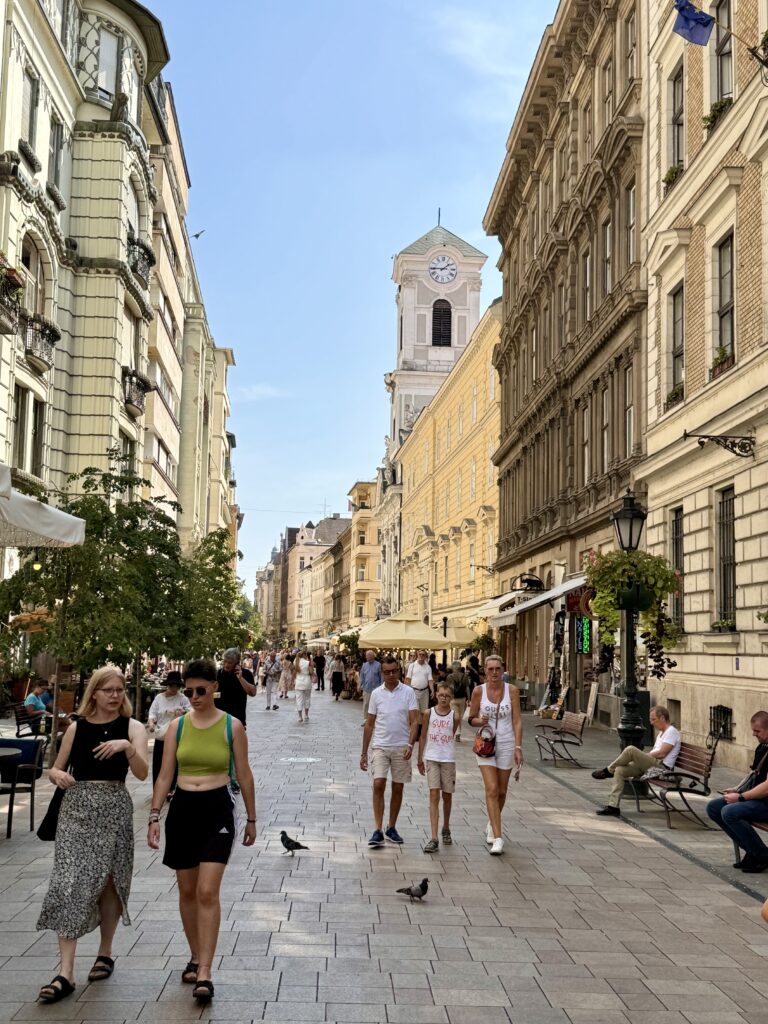
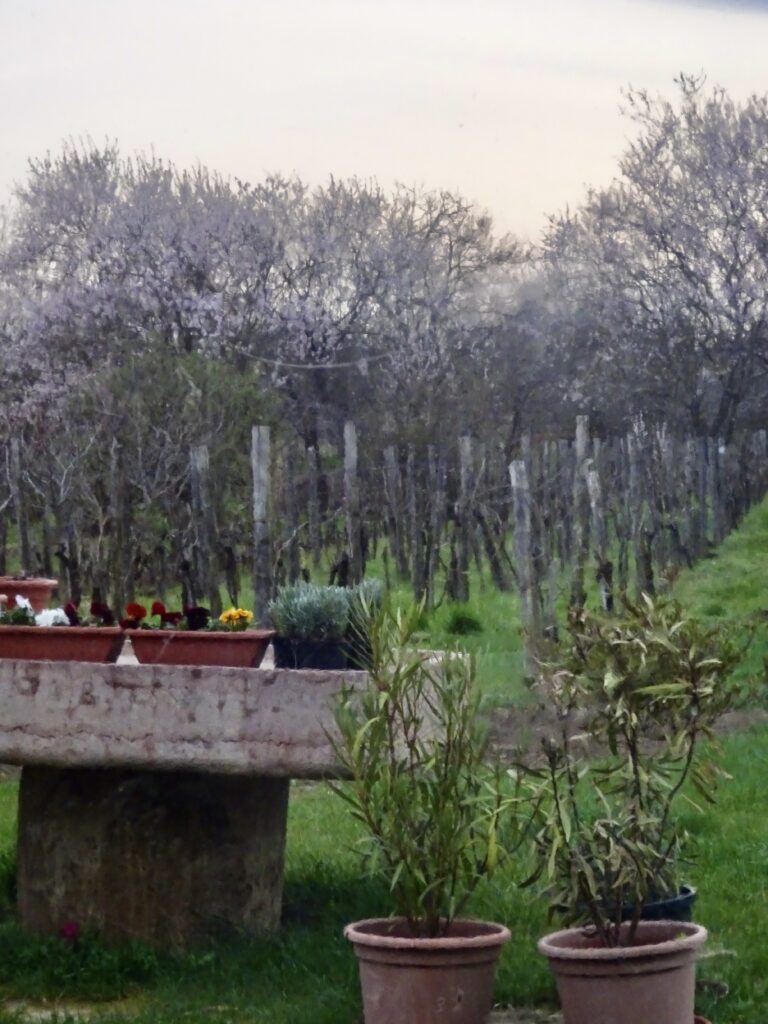
The shopping streets around Váci Utca are lively and fun—good for people-watching, browsing local designs, or grabbing a pastry to go. And the food? Outstanding. Hungarian cuisine has depth and comfort: think tender meats, warming spices, and rich sauces. Every meal was a welcomed treat.
One of our favorite memories from a past visit was a wine tour ending with a dinner in a local vintner’s home, just outside the city. He happened to be a chef, and the entire experience—wine, food, conversation—was amazing. There’s a warmth to Hungarian hospitality that makes it a special part of the journey.
Budapest’s Bridges: Not Just the Chain One
Everyone knows the Chain Bridge—those stately lions, the iron arches, the way it elegantly ties the city together. It’s iconic for a reason. But Budapest has several bridges worth crossing, each with its own personality:
- Chain Bridge (Széchenyi Lánchíd): The grand dame of Budapest’s bridges. Historic and dignified, even during restoration, it commands attention.
- Liberty Bridge (Szabadság Híd): With its vibrant green color and Art Nouveau design, this bridge has an artsy spirit. It’s where the locals hang out in summer—and we get why.
- Margaret Bridge (Margit Híd): Uniquely angled and connecting directly to Margaret Island, it offers a scenic detour and a peaceful walk.
- Elizabeth Bridge (Erzsébet Híd): Sleek, white, and modern, it’s a visual contrast to the city’s older architecture and looks especially beautiful lit up at night.
- Petőfi Bridge (Petőfi Híd): More functional than flashy, but it connects you to quieter neighborhoods and gives a glimpse into everyday life in Budapest.

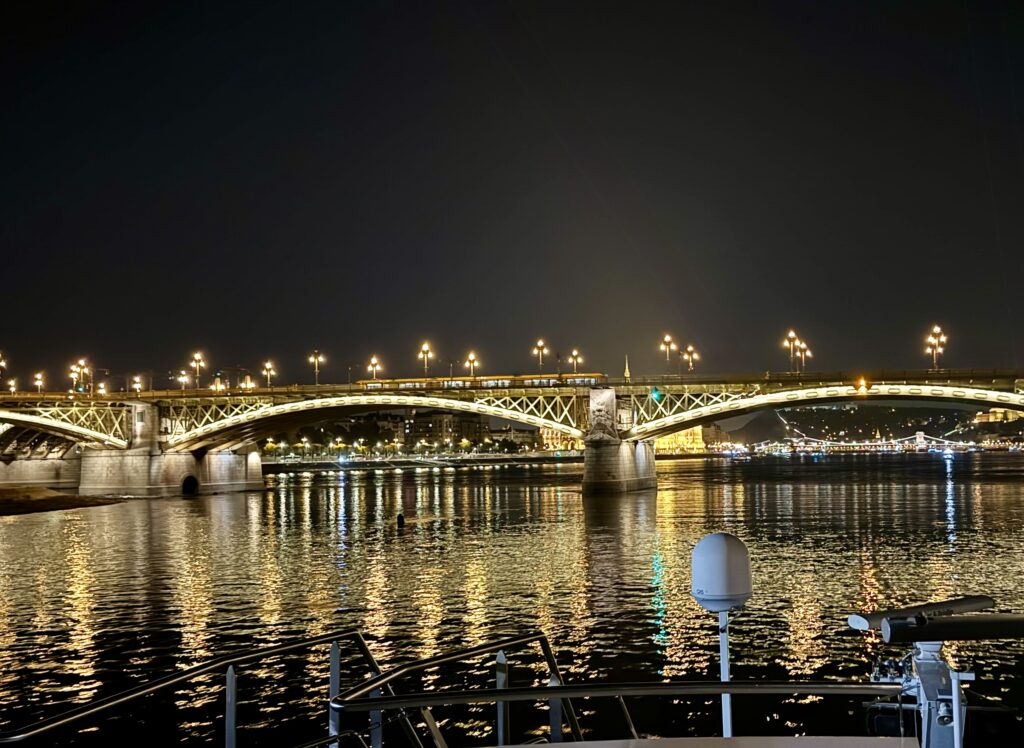

Each bridge frames a different view of the city—and walking across them gives you a sense of just how layered and lively Budapest really is.
Final Thoughts Before Sailing On
Budapest always delivers. It’s a city that invites you in slowly—there’s grandeur, yes, but also corners of history and discovery. It doesn’t try too hard to impress, which somehow makes it more charming.
Starting our river cruise here felt like the perfect beginning. There’s something about the Danube cutting through the heart of the city that sets the stage for the journey ahead. And to see it at night, is just exceptional! If you’ve never been, let Budapest surprise you. And if you have? You already know it’s a city worth visiting again.
Next stop: Vukovar, Croatia. And yes—it’s as interesting as it sounds.


See Next: Vukovar, Croatia: A Quiet & Powerful Strength
Discovering Novi Sad: Serbia’s Unexpected Charm
Belgrade, Serbia – A City of Complex History
Golubac Fortress and Lepenski Vir – A Day in Northern Serbia
The Iron Gate Gorge: From Decebalus to Danube Locks
Viden, Bulgaria: Roses, History and Symphony
Belogradchik Fortress: Bulgaria’s Hidden Gem in the Balkan Mountains

